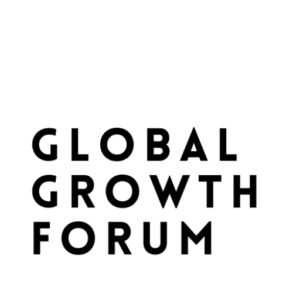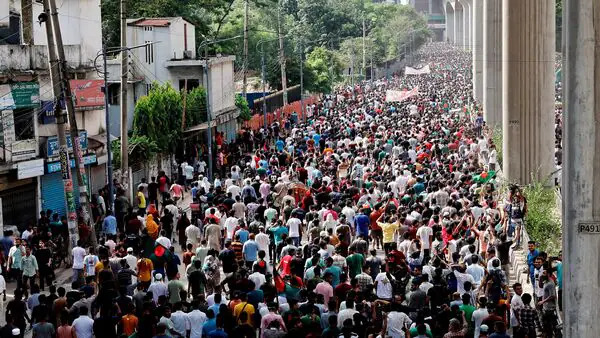Bangladesh has experienced remarkable economic growth over the past two decades, emerging as a key player in the global economy. From its modest beginnings as one of the world’s poorest countries, Bangladesh has made significant strides in economic development, transforming itself into a burgeoning economic hub. However, this success has not come without challenges. As Bangladesh faces a new crisis, understanding the factors contributing to its economic rise and the nature of its current predicament is essential for navigating the future.
1. Economic Rise: Key Drivers and Achievements
**A. Growth Trajectory
- Robust GDP Growth:
- Historical Performance: Since the early 2000s, Bangladesh has experienced one of the highest rates of GDP growth in Asia, consistently averaging around 6-7% annually.
- Recent Trends: The country’s GDP growth reached an impressive 8% before the COVID-19 pandemic, showcasing its rapid economic expansion.
- Diversified Economy:
- Manufacturing Sector: The Ready-Made Garment (RMG) industry has been a cornerstone of Bangladesh’s economic rise, making it the second-largest exporter of garments in the world. The sector has attracted significant foreign investment and created millions of jobs.
- Services and Agriculture: Beyond manufacturing, Bangladesh has seen growth in services, including banking, telecommunications, and IT. Agriculture remains a vital sector, contributing to both employment and food security.
B. Social and Developmental Achievements
- Poverty Reduction:
- Economic Impact: Economic growth has led to substantial reductions in poverty rates. From over 40% in the early 2000s, the poverty rate has fallen to around 20% in recent years.
- Social Programs: Government initiatives such as microfinance programs and social safety nets have played a crucial role in lifting millions out of poverty.
- Human Development:
- Education and Health: Investments in education and healthcare have improved literacy rates, life expectancy, and overall quality of life. Bangladesh has achieved notable progress in reducing child mortality and improving maternal health.
- Infrastructure Development:
- Transportation and Energy: Significant improvements in infrastructure, including roads, bridges, and energy production, have facilitated economic activity and connectivity within the country and with international markets.
2. The New Crisis: Challenges and Implications
A. Economic Slowdown
- Impact of COVID-19:
- Disruption: The COVID-19 pandemic has caused severe disruptions to Bangladesh’s economy, affecting key sectors such as RMG, tourism, and services. Lockdowns, reduced global demand, and supply chain issues have led to a decline in export earnings and domestic consumption.
- Recovery Efforts: While the economy is gradually recovering, the pace of growth has slowed, and many businesses continue to struggle with the aftermath of the pandemic.
- Global Economic Uncertainty:
- Inflation and Supply Chain Issues: Global inflation and ongoing supply chain disruptions have impacted Bangladesh, particularly in terms of rising costs for imports and raw materials.
- Geopolitical Tensions: Geopolitical tensions and trade disputes between major economies have created uncertainties that affect Bangladesh’s export-oriented sectors.
B. Debt and Financial Stability
- Rising Debt Levels:
- Public Debt: Bangladesh’s public debt has increased significantly in recent years, driven by large-scale infrastructure projects and pandemic-related expenditures. Managing this debt while ensuring fiscal stability is a growing concern.
- External Debt: The country faces challenges related to external debt, including servicing costs and currency fluctuations.
- Banking Sector Challenges:
- Non-Performing Loans: The banking sector has been grappling with high levels of non-performing loans (NPLs), which strain financial stability and limit credit availability.
- Regulatory and Governance Issues: Weak regulatory oversight and governance issues within the banking sector have exacerbated financial difficulties.
C. Political and Governance Issues
- Political Instability:
- Governance Challenges: Political instability and governance issues have affected policy implementation and investor confidence. Corruption and bureaucratic inefficiencies can hinder economic progress.
- Election-related Tensions: Political tensions related to elections and party politics can create uncertainty and disrupt economic activities.
- Human Rights Concerns:
- Labor Rights: Concerns over labor rights and working conditions in industries such as RMG have raised questions about sustainable development and ethical practices.
- Freedom of Expression: Restrictions on freedom of expression and media freedom can impact the overall governance environment and international relations.
D. Environmental and Climate Risks
- Vulnerability to Climate Change:
- Natural Disasters: Bangladesh is highly vulnerable to natural disasters such as floods, cyclones, and riverbank erosion, exacerbated by climate change. These events can disrupt economic activities and displace communities.
- Adaptation and Resilience: The country needs to invest in climate resilience and adaptation measures to mitigate the impact of environmental risks on economic development.
- Sustainable Development:
- Environmental Degradation: Rapid industrialization and urbanization pose risks to the environment. Addressing issues such as pollution and resource depletion is crucial for long-term sustainability.
3. Strategies for Addressing the Crisis
A. Economic Reforms and Diversification
- Enhancing Competitiveness:
- Infrastructure Investment: Continued investment in infrastructure is essential to support economic growth and improve efficiency. Upgrading transportation, energy, and digital infrastructure can boost competitiveness.
- Business Environment: Improving the ease of doing business by simplifying regulations, reducing bureaucratic hurdles, and promoting transparency can attract more investment and foster entrepreneurship.
- Sectoral Diversification:
- Expanding Export Markets: Diversifying export markets and products can reduce dependence on specific sectors and enhance resilience to global economic fluctuations.
- Promoting Innovation: Investing in research and development, innovation, and technology can drive growth in emerging sectors such as IT and green technology.
B. Strengthening Financial Stability
- Debt Management:
- Fiscal Discipline: Implementing fiscal discipline and managing public debt prudently are essential to ensure long-term financial stability. Efficient use of resources and targeted expenditure can help reduce debt burdens.
- External Assistance: Engaging with international financial institutions and development partners for technical and financial support can aid in managing debt and implementing economic reforms.
- Banking Sector Reform:
- Regulatory Improvements: Strengthening regulatory frameworks and enhancing oversight within the banking sector can address issues related to non-performing loans and financial stability.
- Governance Enhancements: Improving governance practices and transparency within the banking sector can restore confidence and ensure more effective management.
C. Addressing Social and Governance Challenges
- Governance and Institutional Reform:
- Anti-Corruption Measures: Implementing strong anti-corruption measures and enhancing transparency can improve governance and create a more favorable business environment.
- Institutional Strengthening: Strengthening institutions and ensuring effective policy implementation can address governance challenges and improve public service delivery.
- Social Inclusion:
- Labor Rights and Welfare: Ensuring fair labor practices and enhancing worker welfare are crucial for sustainable development and maintaining social stability.
- Community Resilience: Investing in community resilience and disaster preparedness can mitigate the impact of environmental risks and improve overall well-being.
Disclaimer: The thoughts and opinions stated in this article are solely those of the author and do not necessarily reflect the views or positions of any entities represented and we recommend referring to more recent and reliable sources for up-to-date information.







